If you've read mushroom field guides, or have spent any time watching mushroom flavored media, you're probably familiar with Cordyceps: the group of mushroom species famous for taking over the bodies and minds of insects to do their reproductive bidding.
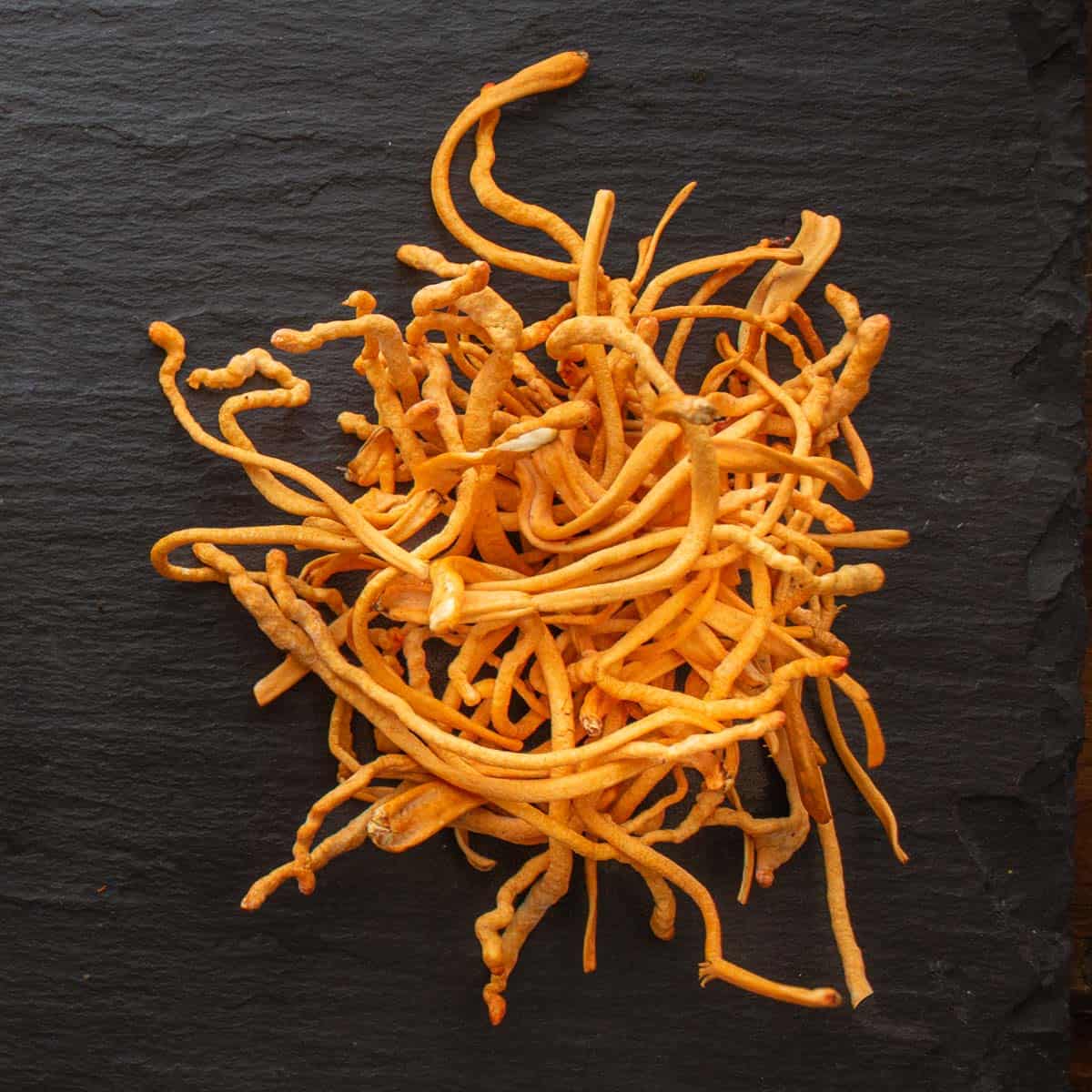
Long story short, the fungus infects insects (ants seem to be the most well known) and controls their movements, sending them to a high perch, where a metamorphasis begins. The mushroom kills the insect, then sprouts a fruiting body from their head, spreading the spores to all the unsuspecting insects below, hopefully repeating the process.
That's the lifecycle that most mushroomers are aware of, especially those interested in medicinal mushrooms, as cordyceps are said to have a number of different positive properties, and are what they're most well known for in the area of human consumption/ingestion. What I wasn't aware of about Cordyceps, is that they can apparently be grown on substrates that aren't insects. There's some solid information online, but I never thought to look it up. That changed when I walked by my favorite mushroom store in San Francisco a few weeks ago: Far West Fungi.
The store always has an impressive amount of fresh, wild and cultivated mushrooms for sale, but today they had baskets of thin, orange club mushrooms I hadn't seen in addition to the usual suspect. I saw the label said Cordyceps, and I thought to my self: "are they selling them as medicine, or what? I didn't have any reason to, but I doubted they were for eating.
While I browsed through jars of preserves and related fungus flavored swag, I saw a chef come up in his whites walk up to the register. He walked with a quick pace, dirty towels tucked in the tie of his apron, and ask if they had more Cordyceps than what was visible for sale, informing the woman behind the counter that he had them on one of his specials that day.
Another customer heard what he said and inquired "you can eat Cordyceps!?" "Yes" the woman behind the counter replied, mentioning something about them being grown on rice instead of the whole insect-zombie scenario. They had my attention now, I grabbed a little basket of the noodle-y orange fungus and got in line behind the chef, to make sure that he didn't clean the place out.
I put the mushrooms in a plastic box from Japan Town (they have everything you'd ever need made of plastic and ridiculous packaging), packed it full of some damp paper towels and put it in my luggage. After I got back to Minnesota, I took them out and threw a few in a pan. The mushrooms taste, like mild mushrooms, but they finish with a sweet note. it's not the sort of sweet that makes you want to put them in a dessert, it's more like the savory sweetness a tomato can have when it's nice and ripe, or a an onion after it's been cooked down, honey mushrooms have a similar sweetness, I think. Club mushrooms I've eaten can have a similar sweetness.
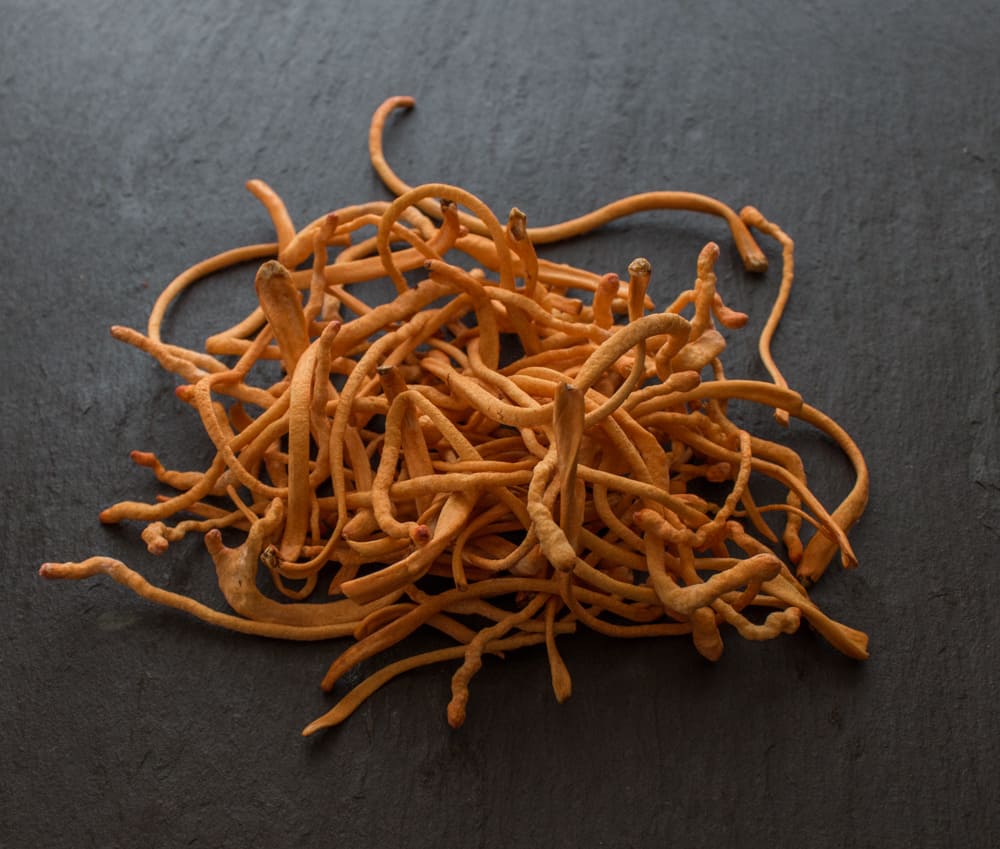
Wanting to know the exact species, I did some digging. I didn't see a lot of accounts of eating them online, but a quick google for orange Cordyceps told me what I had was some sort of Cordyceps militaris. After I figured out the basic species, I consulted my guides. The only book I have to even mention them was Mushrooms Demystified, the stay at home Bible guide that any shroomer should have. Arora mentions their fruiting mechanism, predilection for ant mind control, the basic things you'd suspect, but under the edibility portion of the species profile it read...unknown. I think the only lingering question I might have is of course, if you can eat other cordyceps, but considering that in the kitchen they were kind of a novelty (a tasty one, don't get me wrong) and have pretty scarce availability, I'm content with the taste of them I got.
The cordyceps weren't mind blowing, but they definitely weren't bad, I do wonder though, how different the wild species must taste compared to the cultivated rice strains.
Since the mushrooms are long, spindly, and look a bit like noodles, I tossed a hefty ratio (almost 50/50 by volume) with some pasta and chowed down, note how the recipe is labeled "Cordyceps with linguine, not linguine with cordyceps. It was great, but it would be great without the pasta, too, for a multicourse dinner. For a pasta-less version the warm Cordyceps twirled around a fork on top of some dressed watercress or salad greens would make a fun app.
Cordyceps with Linguine, Shallots, Watercress and Chives
Ingredients
- 2 ounces fresh Cordyceps mushrooms whole
- 3 ounces dried high quality linguine or spaghetti, preferably Rustichella, or Masciarelli
- 1 tablespoon toasted breadcrumbs
- 2 tablespoons extra virgin olive oil plus more for finishing
- 1 large shallot cut in half, then juliened thinly
- 2 tablespoons fresh sliced chives
- ¼ cup dry white wine
- Kosher salt and pepper to taste
- A good handful of fresh watercress trimmed into 1-2 inch pieces
- Dried red pepper flakes optional, to taste
Instructions
- Gently cook the shallot and oil in an 8 inch saute pan, stirring occasionally, until the shallot is wilted and soft. Add the wine and reduce by half.
- Add the cordyceps to the pan and wilt, then turn off the heat. Meanwhile, bring a pot of salted water to a boil and cook the pasta until al dente.
- Drain the pasta, then toss with the mushrooms in the pan. Double check the seasoning for salt, add some of the chili flakes to taste if using, then toss in the watercress and chives, season with a little more olive oil to taste, return the pan to the heat just to warm through, to avoid over cooking the cress and the mushrooms, and divide the pasta between two warmed bowls, garnishing with the breadcrumbs and chives.
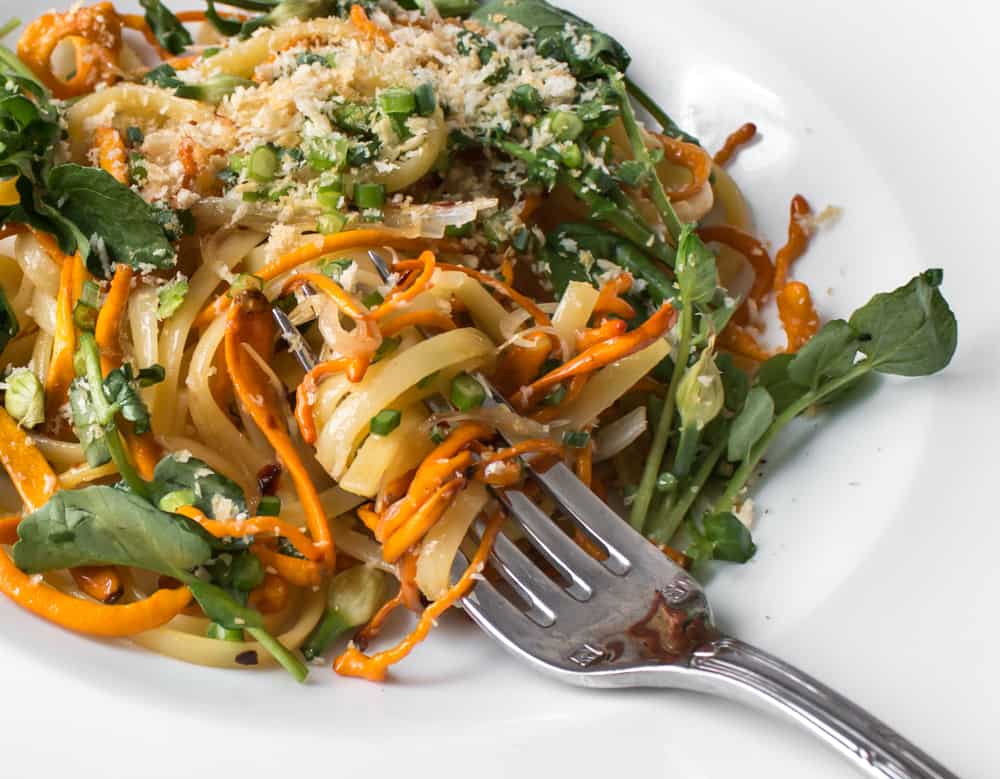
Cordyceps Videos
Here's a couple good videos of Cordyceps doing their thing. My favorite is Planet Earth.

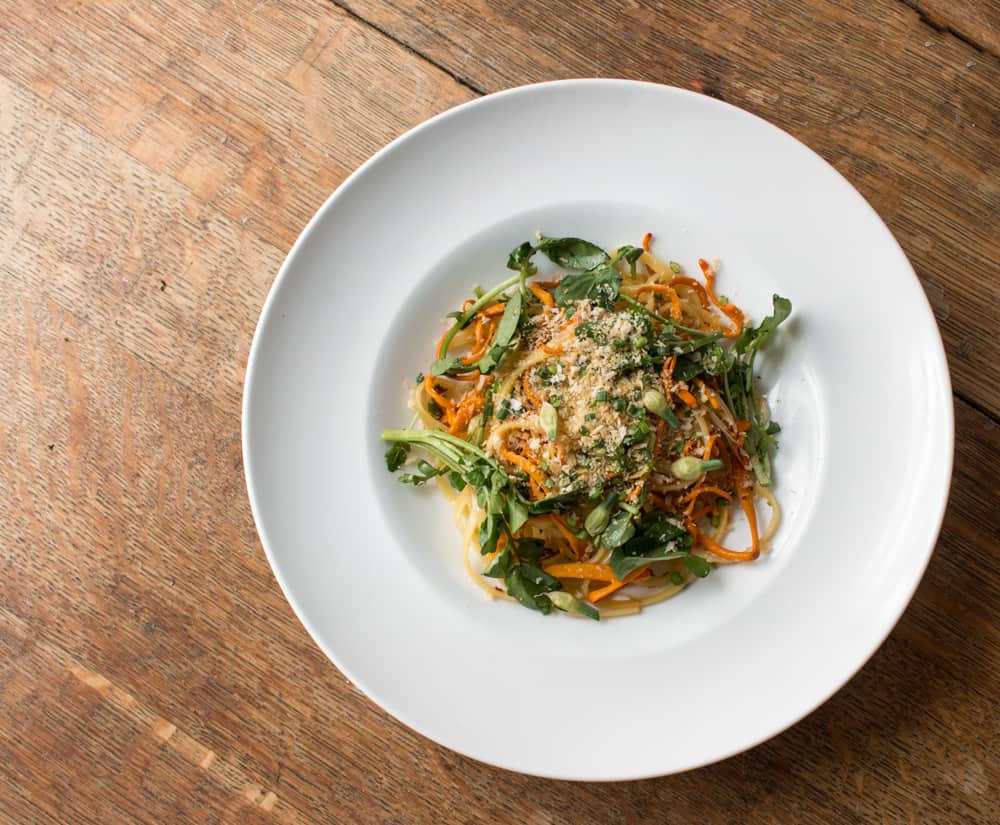
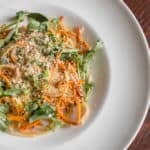
Oregon Shroom Shop USA
Great post Alan. If not the best then it should be among one of the best to combat Depression and Anxiety
Alan Bergo
I don't discuss medicinal aspects of mushrooms but I appreciate the sentiment.
Kathryn
I love these. Made the pasta last night.
Jacqui
When I was in Beijing last, in 2019, i.e., when it was still possible, my husband took me for dinner at King's Joy, which was an incredible dining experience. It may be the only completely vegetarian 3 Michelin starred restaurant in the world. Everything they did with mushrooms was incredible - the matsutake broth may well be the best thing I have ever tasted - but the Cordyceps served in a light broth was also a very good dish and it was the first time I had eaten Cordyceps.
Today I was in the Asian market area and I just found 120 g dried Cordyceps from China for about 5$. Haven't tried them yet. I assume these were cultivated on rice or barley.
John
Wow, quite cheap. Be aware that cordyceps are often extracted of all their properties and are re-dyed. It doesn't matter if you plan to only eat them. However, making your own extraction or using them for medicinal purposes would not be recommended.
Alan Bergo
Hey thanks John that's interesting, I hadn't hear of that being done to cordyceps. Wouldn't put it past some of the medicinal businesses though, from my experience.
if its only love
Very nice cordyceps militaris, love it!
Cordyceps militaris
I also love to cook chicken and pork with Cordyceps militaris, it is very tasty and so delicious!
Kim Caterino
💯 fascinating! Thank you!
Alan Bergo
Thanks Kim
Jasper
Great article. I just bought a 50g pack for less than $2 in a Thai supermarket. Looking forward to cooking them together with some shiitake.
Tayka
Raw cordyceps edible?
Alan Bergo
I'd suspect cultivated varieties are, but I can't speak to it.
Samantha
It is not recommended to eat any mushroom raw. The mushroom has a variety of changes that it goes through turning the flesh and nutrients into a viable source of nutrition after they are cooked, as a general rule of thumb they can cause gastrointestinal distress as well if not cooked. It is recommended to cook your mushrooms around 8-10 minutes depending on the mushroom a little less may be ok. The flesh however is virtually indigestabe if you don't cook it, when it is cooked you are essentially releasing all the nutrients that wouldn't be available otherwise, protein, vit B, and minerals, hope this helps 🙂
Alan Bergo
Just playing devils advocate here since I enjoy this topic. :O
Sure, you can't digest chitin that mushroom tissue contains, but we also can't digest corn that hasn't been nixtamalized--that doesn't stop us from eating that. Raw mushroom consumption has been widely practiced around the world for thousands of years, likely much longer, and for some species, it is a very valuable culinary application. In the markets of Provence I pigged out and ate nearly a 1/4 lb of raw Amanita caesarea, in Japan, matsutake are regularly served raw in sushi restaurants, and in my opinion it's one of the best ways to enjoy perfect, clean buttons. Last year, I ate over a pound of raw, lacto-fermented ischnoderma resinosum over the course of a few days. In italy, young porcini are regularly shaved raw like truffles on all kinds of things--a trick passed down from the Romans and Etruscans. Truffles, although not typical fruiting bodes, are mostly served raw, since they lose their flavor after cooking. Even so, not every mushroom should be served raw, and many favorites like all Morchella, Gyromitra/murklor, Leccinum and honey mushrooms are toxic raw. You need to take it species by species.
John
Wow, lots of great information here. Thanks for sharing!
Fungalicious Delights
yes raw cordyceps are completely edible....
Alan Bergo
Thanks Fungalicious.
Grumpy Fungus
I agree, species by species is best practice; in the case of Cordyceps militaris, the mushroom contains protein "CMP18 which induces apoptosis in vitro via a mitochondrion-dependent pathway. It is thought that it might be toxic when eaten. Cooking destroys this protein." (https://en.wikipedia.org/wiki/Cordyceps_militaris)
Kate
This post is from forever ago, but I have info on this! Raw cordycepts, cultivated or not, are *not* edible. You need to cook them. My partner works for an ag-tech company that grows mushrooms and they just started experimenting with cordycepts. Two employees took small tastes of the new shrooms right out of the substrate and felt feverish/dizzy for two days. Fairly mild symptoms but would have been worse if they’d eaten more, I’m sure. Be safe out there, cook those cordys!
Alan Bergo
Hey thanks for that. Yes, this post is ancient. There's a re-write coming in the near future.
John
The substrate these lovely fungi grow on can sometimes ferment or contain bad pathogens and other microorganisms that can make us sick. Many people use leftover growing substrate as chicken feed or as a simple byproduct. Some argue it can be eaten as long as it is properly prepared via dehydration or other techniques. This is all speculation, of course. Hope this was some helpful insight! Happy harvests!
Alan Polk
Great post! Question - are the original cordyceps - those that zombied the insects - are they also edible?
Alan Bergo
I'd assume so, as they're used medicinally.
Denise masi
Hello
In the ingredients you list dry white wine however in the description area you don’t say how it should be used
Alan Bergo
Thanks Denise, It's added after the shallots are cooked.
Julias
Wholesale I'm getting them for $100/5lb. 5lb minimum. Make the pound price about 25-28, and dry around 18-20/oz or 250/pound
Sean Schriver
I grow cordyceps in Iowa for myself but recently have been approached fror fresh and dried cordy's for a restaurant...what's the going rate in your area per ounce or pound?
Funguy
Yep, these are available everywhere here in China. You can find them either fresh or dried. They seem to be growing on a barley medium as opposed to a rice medium. They're pretty good.
Erik Wagner
I can't keep up with speaking in abbreviations. "....would make a fun app". Oh, an application put on my phone wouldl give me the recipe, I thought. Finally figured it meant appetizer. It's difficult to be a reader these days.
Alan Bergo
I do sometimes speak with abbreviations, or use kitchen shorthand. I'm a chef, have lived my entire life in the kitchen, and for better or worse I've noticed it affects my speech pattern. the strongest influence is Spanish though as I've developed a bit of an accent from speaking broken English with employees for so many years. Good to know though, in the future maybe the term small plate can be better.